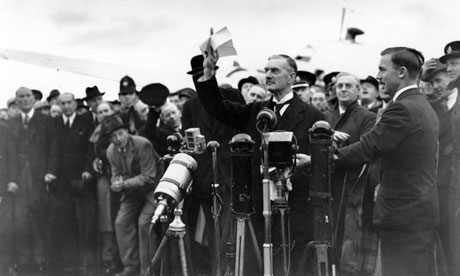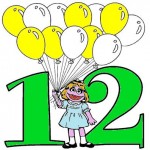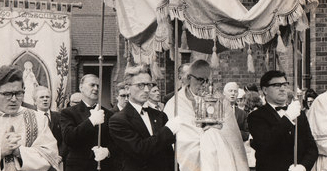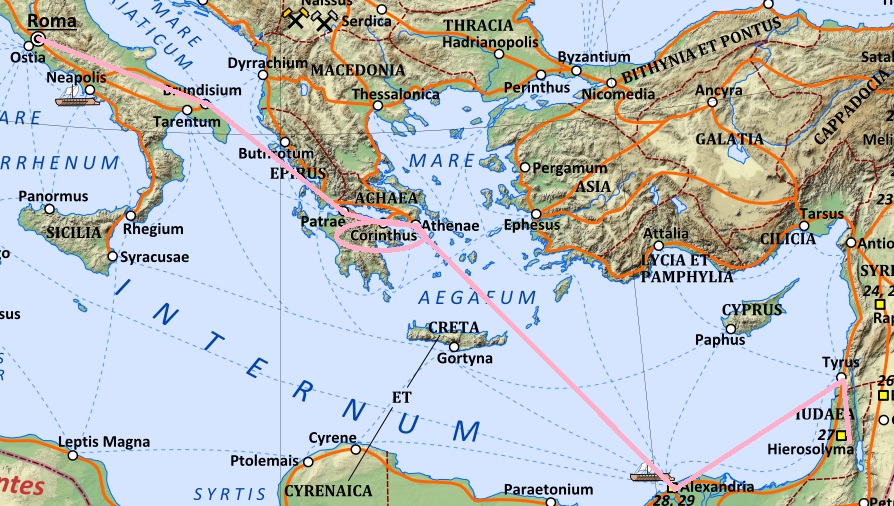When Jesus reached the age of 30, he began his ministry, going around Israel healing, rebuking, and spreading the word of God. Wherever Jesus was present, crowds were following him most of time. At that time, Jesus did everything; performing miracles such as reviving the dead or multiplying five pieces of bread and two fish to feed 20,000 people. (The 5000 came from only counting males.) And he did this miracle multiple times.
But then Jesus ascended to heaven, and it was the crowd that followed Jesus that were doing these miraculous things. Disciples, or apostles, were healing the sick, reviving the dead, and preaching from Samaria to the ends of the world. Those crowds came together and formed this special community dedicated only to serving our Lord Jesus and spreading the very special and happy news: that Jesus died for our sins, that we are no longer in the reigns of Devil, and that by his blood we received our salvation. The thing is, Jesus was the one who commanded the disciples to do these miraculous things.
John 14:13-14: “And I will do whatever you ask in my name, so that the Father may be glorified in the Son. You may ask me for anything in my name, and I will do it.”
This verse is essentially saying that we will be able to do anything we ask Jesus for. Here, this verse is NOT saying that he will “give” us anything if we ask in his name, he is saying that he will “DO” anything we ask him for, to show the glory of God.
The apostles were doing the exact same things Jesus did in his ministry, and even more. How does one do this? It is written in Acts 1:4-5:
Acts 1:4-5: “On one occasion, while he was eating with them, he gave them this command: “Do not leave Jerusalem, but wait for the gift my Father promised, which you have heard me speak about. For John baptized with water, but in a few days you will be baptized with the Holy Spirit.”
And receive the Holy Spirit they did, on Acts 2:1-4:
Acts 2:1-4 “When the day of Pentecost came, they were all together in one place. Suddenly a sound like the blowing of a violent wind came from heaven and filled the whole house where they were sitting. They saw what seemed to be tongues of fire that separated and came to rest on each of them. All of them were filled with the Holy Spirit and began to speak in other tongues as the Spirit enabled them.”
So they began doing miraculous things as I have mentioned, and then the church began to receive persecution. Now, that seems like a bad thing, however, God uses many things to help us.
The persecution believers received made them scatter, allowing them to spread the words of Gospel everywhere. The persecution Paul received during Acts 18 caused Paul to spread Christianity to Gentiles.
Philippians 1:12-14:
“Now I want you to know, brothers and sisters, that what has happened to me has actually served to advance the gospel. As a result, it has become clear throughout the whole palace guard and to everyone else that I am in chains for Christ. And because of my chains, most of the brothers and sisters have become confident in the Lord and dare all the more to proclaim the gospel without fear.”
This is what a model church should be like. A place where the teachings of the apostles are alive. Our job is to follow what acts the apostles did to help the church, which is essentially what Jesus told them to do, as seen on Matthew 28:19-20:
Matthew 28:19-20: “Therefore go and make disciples of all nations, baptizing them in the name of the Father and of the Son and of the Holy Spirit, and teaching them to obey everything I have commanded you. And surely I am with you always, to the very end of the age.”
The sad fact of most churches today is that there are teachings given every Sunday, yet nobody lives by them. What is the point of teaching something, if we do not live by it? Yes, we are all sinners, we are bound by our flesh. However, it is a sad fact that there are many people out there claiming to be Christians, but they’re wearing coats of lambs to hide what they really are. We are supposed to do what is taught, and we are supposed to follow the apostles’ teachings and live by them.
So what are the acts the apostles did? Let us look at Acts 2:42:
Acts 2:42: “They devoted themselves to the apostles’ teaching and to fellowship, to the breaking of bread and to prayer.”
Amen. This is what all of today’s churches should be doing. If we are taught to pray, we should pray every moment. If we are taught to evangelize, we should live by it.
Communion, the breaking of bread we have every month, symbolizes the Last Supper. Luke 22:19-20:
Luke 22:19-20: “And he took bread, gave thanks and broke it, and gave it to them, saying, “This is my body given for you; do this in remembrance of me.” In the same way, after the supper he took the cup, saying, “This cup is the new covenant in my blood, which is poured out for you.”
So having communion is essential. Let us look at 1 Corinthians, 10:19-21:
1 Corinthians, 10:19-21: “Do I mean then that food sacrificed to an idol is anything, or that an idol is anything? No, but the sacrifices of pagans are offered to demons, not to God, and I do not want you to be participants with demons. You cannot drink the cup of the Lord and the cup of demons too; you cannot have a part in both the Lord’s table and the table of demons.”
Our communion we do every month is a version of the sacrifices made to the idols in other religions. However, we serve the one and only living God. The communion we do is to experience being one with God by body of Jesus and the covenant in his blood, and so it is one of the most important procedures of churches.
One of the most important things we should do is to pray everyday, or if you are more of a extremist, pray every moment. Praying and repenting every day is the example that notable figures in the Bible gave. What is our excuse for not doing the same? The end of the days is closer than it was 2000 years ago; we should pray every day. Christians that set examples are what makes their church the model church, essentially what every church today should be.
So what should be the model Christian? A person who prays and repents everyday, participates actively in fellowships, etc, but one of the most important things is to have a good reputation.
Let us turn to Acts 6:3:
Acts 6:3 (NIV): “Brothers and sisters, choose seven men from among you who are known to be full of the Spirit and wisdom. We will turn this responsibility over to them”
Now, I admit that I was confused when I saw this verse. In my Korean Bible version, verse 3 specifically states “good reputation”, So I decided to look into the King James Version:
Acts 6:3 (KJV): “Therefore, brethren, seek out from among you seven men of good reputation, full of the Holy Spirit and wisdom, whom we may appoint over this business;”
“good reputation”. I do not know why the NIV version translates this way, but as seen here, having a good reputation was essential to take part in operating a church, a lesson perhaps learned (this is my own interpretation) when they choose Mattias by casting lots. The Bible does not say whether thIs went well or not, but they never did use lots to fill a position ever again.
Now the thing about evangelizing is that the problem most Christians today face: they have no friends to spread the happy news to. As a person progresses into becoming a Christian, they slowly began losing their earthly friends. It is understandable; you might want to avoid them due to their sins and evil deeds they perform. However, it is also important to keep on making earthly friends. Why? To spread the joyous news with them. Fellow Christians, do not be afraid of earthly people. As Jesus said:
Matthew 10:28: “Don’t be afraid of those who want to kill your body; they cannot touch your soul. Fear only God, who can destroy both soul and body in hell.”
We are supposed to keep on preaching to those who are in darkness. You might think this as cumbersome and hurting to your personal reputation. However, why do you only think of yourselves? By sacrificing part of our daily life, those people who are blinded are able to see light and receive salvation! It is our duty, and no Christian should have the blood of another brother on his hands simply because they did not tell him the great news of our salvation.
Do you know why people of earth always accuse of church of doing wrong ten things when church makes one mistake? I’ll tell you why: they are afraid of US. We should not be afraid of them. This fact saddens me: Christians these days have little faith. They just stay in their Christian circle, not going out to the world and preaching to them this good news. That is the way for the true fellowship. Readers, staying in your safe circle is not the way. The disciples were some of the first people to believe in Jesus Christ, and after Jesus rose up to heaven, did they stay in their safe circle, not telling other people of this happy news? No. They had to be brave enough to face all the persecutions they were given and they stayed strong even till death, preaching to other people about the fact that Jesus died for our sins to other people. That is what we should be doing. Did Jesus tell us to come up to the heavens in order to preach to us about the happy news? No. Did he abandon us, the sinners, when others mocked him for being friends with us? No. He came down to our level, and sacrificed himself so that we may receive our salvation. He became our Friend.
Let us look at John 15:13-14:
John 15:13-14: “Greater love has no one than this, than to lay down one’s life for his friends. You are my friends if you do whatever I command you.”
Let us think for a moment. Is it a good thing or a bad thing for Jesus to have us as his friend? It would be a bad thing. Why in the world would he associate himself with us, who are sinners? He feasted with sinners and tax collectors! This was the main reason rabbis condemned him! When John fasted and did not eat, they called him a demon, and when Jesus feasted with tax collectors, they called him a drunkard, friend of sinners. However Jesus did not come down to Earth for the righteous; he came for the sinners.
That is the example model Christians should be setting to other people. Simply believing is not enough; over time, we must become more and more similar to the personality of Christ himself. The convention of these people, who pray day and night, operate the church as a whole, and evangelize to other people constantly is what makes the model church, what every church in our generation should be like. For indeed, the end is near.
 Our story begins in 1517 when a middle-aged, Augustinian monk named Martin Luther wrote a letter to his bishop protesting the sale of indulgences by a Dominican friar in Germany. Luther claimed that the transaction violated the Church’s mission to offer the free gift of salvation by faith to all people. This seemingly insignificant dispute sparked the first fire of the Reformation and simultaneously propelled Luther into a late-life career in which he translated the Bible into German, wrote numerous hymns and commentaries,
Our story begins in 1517 when a middle-aged, Augustinian monk named Martin Luther wrote a letter to his bishop protesting the sale of indulgences by a Dominican friar in Germany. Luther claimed that the transaction violated the Church’s mission to offer the free gift of salvation by faith to all people. This seemingly insignificant dispute sparked the first fire of the Reformation and simultaneously propelled Luther into a late-life career in which he translated the Bible into German, wrote numerous hymns and commentaries,  We might expect that interference of this level would prompt worldwide outrage within the Church Universal. It didn’t. Yes, there were great heroes to match the great villainy:
We might expect that interference of this level would prompt worldwide outrage within the Church Universal. It didn’t. Yes, there were great heroes to match the great villainy:








